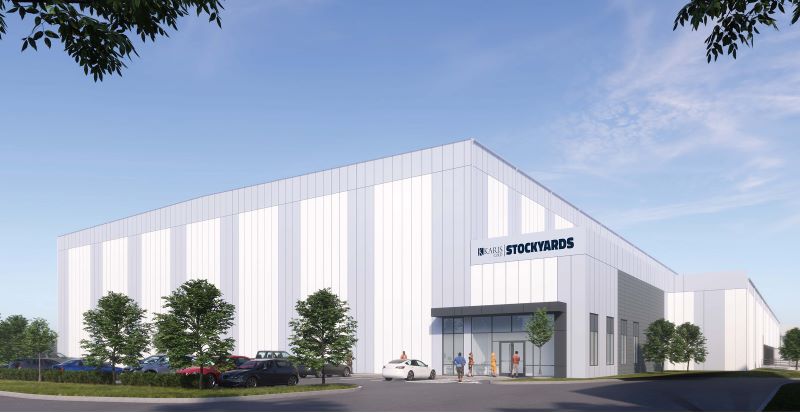January 2020
For the East-West corridor, vacancy is an opportunity not a liability
 Between the 3rd and 4th quarters of 2019, per NAI Hiffman data, Chicago’s overall suburban vacancy rate rose slightly—up 13 basis points to 18.68 percent. The East-West corridor saw the biggest jump, rising to 16.00 percent, or a 39-basis-point increase. Is this a sign of a submarket in decline?
Between the 3rd and 4th quarters of 2019, per NAI Hiffman data, Chicago’s overall suburban vacancy rate rose slightly—up 13 basis points to 18.68 percent. The East-West corridor saw the biggest jump, rising to 16.00 percent, or a 39-basis-point increase. Is this a sign of a submarket in decline?
Need more insight into what’s going on in the East-West corridor and other west suburban office submarkets? We got you covered. Join us at the State of DuPage County & Western Suburbs CRE Market conference on February 13.
With 35 million square feet of inventory, the East West corridor is the largest suburban office submarket by volume. As such, it is generally immune to wild swings in vacancy that the more volatile O’Hare area may see from time to time.
“It’s always been the last submarket to get affected by an economic downturn and one of the first to recover,” said Pat Kiefer, executive vice president, NAI Hiffman.
As that’s the case, then it should be all the more troubling that the East-West corridor has seen a larger spike in vacancy than the overall suburban average. However, in this quarter-over-quarter comparison as well as throughout the cycle, the numbers have been skewed by additional supply.
“Ever since the economy rebounded in 2010, we’ve had a lot of space hit the market than we have demand for,” said Kiefer. “We’ve been gradually plugging along filling those holes, but as we fill them, we get additional space that hits the market.”
The biggest addition to the submarket in quite some time was the former McDonald’s headquarters in Oak Brook, Illinois. It still remains to be seen how John Paul DeJoria plans to fill the 332,000-square-foot office space, but until he does, the campus is sitting in the red on the East-West corridor’s books.
In general, Oak Brook is the star of the submarket. The East-West corridor has a dual mentality, with the portion east of I-355 characteristically outperforming the collection of properties to the west. At the heart of that is Oak Brook, with typically the lowest vacancy and highest rental rates.
“That’s what we’re seeing today, record-net-high rental rates in Oak Brook,” Kiefer said. “And those rates tend to drop the further west you go.”
According to Kiefer, the buyer pool for suburban office product has atrophied as the cycle has gone along. In his experience, rather than institutional buyers, local entrepreneurial groups have accounted for most transactions involving these properties. This has led to buildings getting pulled off the market after not fetching the expected offers.
“We’re really pushing through our typical real estate cycle and typically we would have seen institutional landlords back in this market by now,” said Kiefer. “They’re still pushing towards higher-return investments on the industrial side, as opposed to the suburban office. It seems like they get scared off every cycle, but eventually they end up returning.”
There have already been a few large deals showing this reversal in the East-West corridor. KORE Investments paid nearly $130 million for 3500 Lacey Road, a 583,982-square-foot, Class A office tower in Downers Grove, Illinois that has benefited from more than $7 million in capital improvements over the past six years. In another deal, New Jersey-based Fairbridge Properties purchased Oak Brook Gateway for $42 million; with tenants such as Aerotek, Lewis University and Oxford Bank, the eight-story building was 93 percent occupied at acquisition.
The one thing that the East-West corridor in particular has going for it is exemption from Cook County taxes. As new assessments start to take effect this year, there may be a flood of tenants out of the O’Hare area and other portions of the county.
DuPage County’s East-West corridor boasts property taxes of $1 to $2 per square foot, as opposed to the $5 to $7 per square foot that can be in effect in Cook County. That may be enough to drive some users to seek space along I-88.
The submarket also has a good supply of high-quality assets where tenants can take advantage of the amenity war that has waged everywhere, not just in the CBD. Love it or hate, suburbs are dependent on the automobile; that extends to office amenities, too, with some buildings bringing in food trucks or offering mobile spa services and even mobile oil changes.
Between the beneficial tax status, quality space offerings and attractive amenities, Kiefer remains optimistic about the submarket’s prospects and future deal flow.
“It seems like every time we fill a block of space, we get another block back. We still have several great options of large-block availability in the market, both on the eastern and western side of the markets,” Kiefer said. “We anticipate those to get filled, not necessarily at record pace, but they will eventually get filled.”
As seen at REJournals.com.


